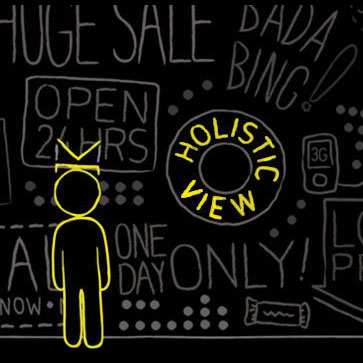5 Oughta Knows About Adwords Enhanced Campaigns

Google's new enhanced campaigns provide marketers with a better way to advertise across devices in our increasingly mobile world.
This is because enhanced campaigns allow marketers to manage ads across devices, locations and times of day within a single campaign. By leveraging this new AdWords development, marketers can reach their most valuable customers and connect with them at any time, from anywhere and on any device.
For example, if a pet store wants to reach nearby mobile customers during business hours, the store's marketer can increase its bids to reach prospective customers who are searching on their smartphones during a certain time of day and are located within a five-mile radius of the store. Moreover, the marketer can decrease their bids during the hours that the store is closed. By doing this, the pet store is spending more money on local customers who are searching for pet services, which makes them more likely to convert. However, the business is also saving money by lowering bids when customers are unable to convert at the brick-and-mortar location (e.g. after hours).
That being said, enhanced campaigns bring many changes to the AdWords experience. Discover five oughta' knows about this new platform development below:
1. Two Campaigns can be Merged Together
Instead of having two separate campaigns that target different devices, marketers can combine their campaigns into one enhanced campaign that targets consumers across devices. When merging campaigns, marketers first need to choose a primary campaign in which the other campaign will be merged into. The selected primary campaign should have the most current ad groups, largest keyword list, highest investment, longest history and most statistics. It is also important to note that marketers who have more than two campaigns can start by merging two at a time.
2. Ads can be Customized by Device
Enhanced campaign allows marketers to customize ads and extensions so that they are shown to specific customers depending on the device they are using when they are searching. For example, if an ad group contains a standard and mobile text ad, users can set the device preference to mobile for the mobile-optimized ad. Then, when consumers are browsing on a mobile device, the marketer's mobile ad will take preference over the standard ad. This is useful because marketers can customize their mobile ad to promote their storefront, while the standard ad can be built to promote their website.
3. Extensions can be Scheduled
Enhanced campaigns allow marketers to schedule start and end dates for call, app, sitelink and offer extensions. In fact, with scheduling, marketers will be able to determine the specific days and times of day that these extensions run. Moreover, marketers can specify which sitelink extensions they want to show up on mobile ads, such as a store locator or an in-store deal.
4. Bid Adjustments Give Marketers More Control
Marketers can adjust their bids for enhanced campaigns in order to have more control over when and where their ad displays. For example, marketers can increase or decrease bids to be either more or less competitive for mobile searches. Moreover, bids can be adjusted for times, days and locations. It is important to note that with bid adjustments, the amount a marketer spends on individual clicks may vary, but the overall daily budget will stay the same.
5. New Conversion Types Available for Tracking
Enhanced campaigns give marketers the ability to track new conversion types. For example, they have access to reports that track advanced call metrics and app downloads.
BONUS: 6. Changes Aren't Mandatory... Yet.
While enhanced campaigns rolled out as an option in February, marketers will have until mid-2013 to convert all of their campaigns.









